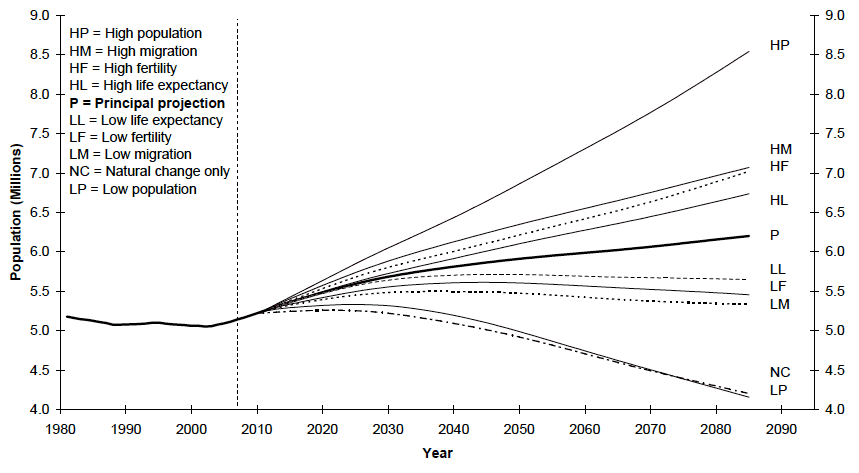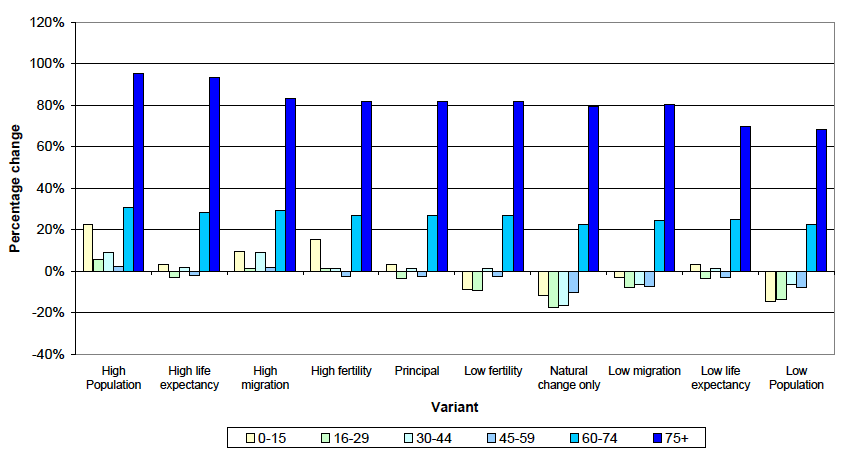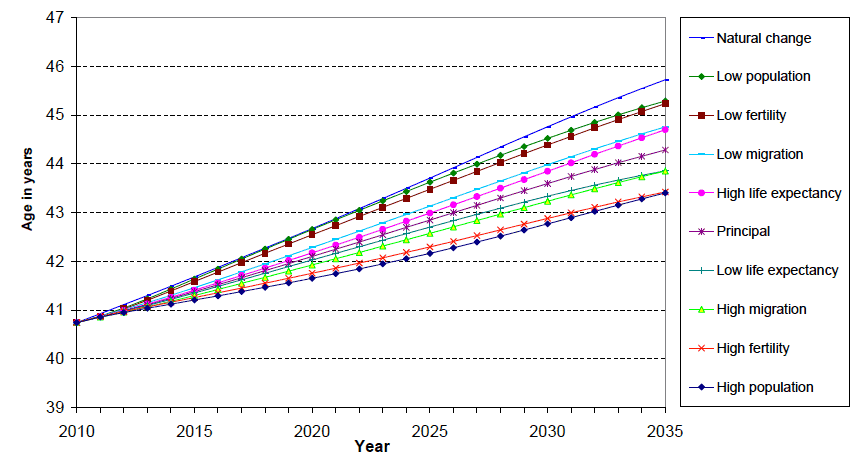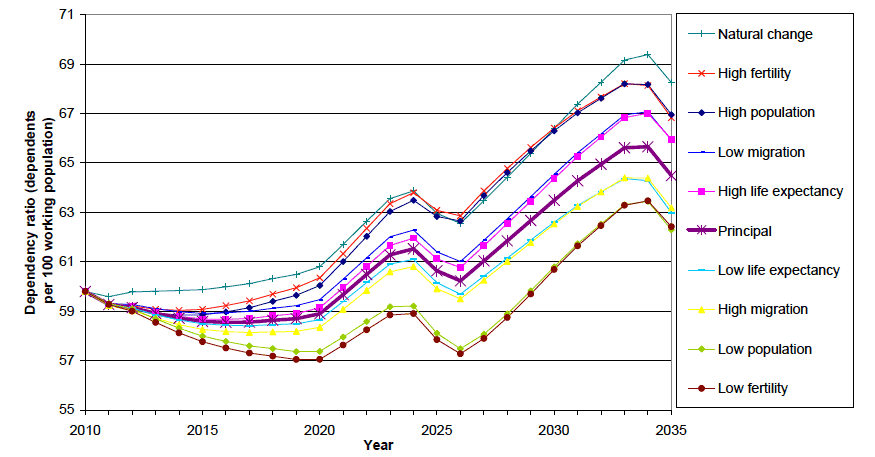
8.1. The Office for National Statistics (ONS) produces projections for Scotland for up to 100 years ahead. Results for the 100 years of this period are available from the ONS website. The reliability of projections decreases as you go further into the future.
8.2. This report concentrates on the principal projection but ONS also produces a number of variant projections. These variant projections are based on alternative assumptions of future fertility, mortality and migration. The variants are produced to give users an indication of the inherent uncertainty of demographic behaviour, especially for the long-term projections. The purpose is to illustrate plausible alternative scenarios and not to represent upper or lower limits for future demographic behaviour. These projections are simply scenarios (the certain outcome of a given set of assumptions), rather than forecasts of the most likely course of future events.
8.3. The scenarios in this publication, in addition to the principal projection, are six standard high/low variants associated with the three components of fertility, life expectancy and migration, a special case zero migration variant (with natural change only), and the combination variants which produce the high and low population. These final two variants are produced by combining the high (or low) variant assumptions for fertility, life expectancy and migration and can, for all practical purposes, be considered as giving plausible upper and lower bounds for future total population size. Annex D gives more information about these variants, and the remaining variants which will be released in November.
8.4. Figure 11 and Table 7 show Scotland's population under each of the alternative variant projections.

8.5. The high fertility variant results in a 2035 population that is 0.15 million higher than the principal projection. This is due to the extra births associated with the higher fertility assumption. In contrast, the low fertility variant results in the population in 2035 being 0.16 million lower than the principal projection.
8.6. The high and low life expectancy variants project the population to be 0.07 million higher or lower than the principal projection respectively, due to the changes in the number of projected deaths.
8.7. In Figure 11 it can be seen that the single component variants which lead to the highest and lowest projected population for 2035 are the migration variants. Table 8 focuses on the migration variants, and shows the projected components of population change in the period to 2035 for the principal projection, the high and low migration variants and the zero migration variant. This shows the effect of different migration assumptions on the size of the future population. Under each of these projections the fertility and mortality assumptions are the same but the number of births and deaths change. This highlights the fact that the numbers of births and deaths are partly dependent on the assumed level of net migration. For the high migration variant the increase in the population over the 25 year period due to natural change is 0.12 million whereas with the principal projection natural change only results in an increase of 0.07 million.
8.8. The principal projection shows Scotland's population increasing by 0.53 million (10 per cent) between 2010 and 2035. By comparison, the zero migration projection indicates a 0.06 million (1 per cent) decrease and the high migration variant projects a 0.79 million (15 per cent) increase. The total effect of migration in the principal projection summed over the first 25 years is to add 0.46 million people to Scotland's population by 2035 and, under the high migration variant, to add 0.67 million - and this is not taking into consideration the increase in natural change as the result of increased migration. It is clear that the projected increase in Scotland's population between 2010 and 2035 under the principal projection is dependent on continuing migration into Scotland.
8.9. As Figure 12 shows, under all of the variant projections, and the principal projection, Scotland's age structure is projected to change dramatically between 2010 and 2035. In each case, the number of people aged 60 and over is projected to increase significantly, (particularly the number aged 75+) while, in most cases, the numbers in each of the age categories below 60 are projected to decrease. This is further demonstrated by Figure 13 which shows that the average age of Scotland's population increases steadily across the projection period under all of the available variant projections.


8.10. Figure 14 shows that the dependency ratio (number of dependents per 100 people of working age population) will rise under all available variant projections although the increase in the state pension age to 66 for both men and women between 2024 and 2026 will result in a short term decrease. Amongst the available variants, the biggest projected increase in the dependency ratio occurs under the natural change only variant, increasing the dependency ratio from its 2010 level of 60 to 68 in 2035. The smallest increase over the period occurs under the low population variant as it only increases to 62 by 2035.
